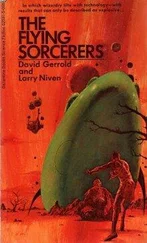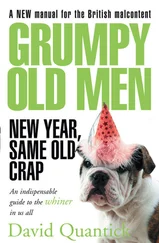David Gerrold - A Matter for Men
Здесь есть возможность читать онлайн «David Gerrold - A Matter for Men» весь текст электронной книги совершенно бесплатно (целиком полную версию без сокращений). В некоторых случаях можно слушать аудио, скачать через торрент в формате fb2 и присутствует краткое содержание. Год выпуска: 1983, Жанр: Боевая фантастика, на английском языке. Описание произведения, (предисловие) а так же отзывы посетителей доступны на портале библиотеки ЛибКат.
- Название:A Matter for Men
- Автор:
- Жанр:
- Год:1983
- ISBN:нет данных
- Рейтинг книги:4 / 5. Голосов: 1
-
Избранное:Добавить в избранное
- Отзывы:
-
Ваша оценка:
- 80
- 1
- 2
- 3
- 4
- 5
A Matter for Men: краткое содержание, описание и аннотация
Предлагаем к чтению аннотацию, описание, краткое содержание или предисловие (зависит от того, что написал сам автор книги «A Matter for Men»). Если вы не нашли необходимую информацию о книге — напишите в комментариях, мы постараемся отыскать её.
A Matter for Men — читать онлайн бесплатно полную книгу (весь текст) целиком
Ниже представлен текст книги, разбитый по страницам. Система сохранения места последней прочитанной страницы, позволяет с удобством читать онлайн бесплатно книгу «A Matter for Men», без необходимости каждый раз заново искать на чём Вы остановились. Поставьте закладку, и сможете в любой момент перейти на страницу, на которой закончили чтение.
Интервал:
Закладка:
"The infestation has manifested itself in several distinct forms that we are aware of-and probably quite a few more that we have not yet discovered." She stopped, touched a control, looked behind her to see that the screen was showing the appropriate slide-some kind of red sludge floating on a lake-and continued. "While most of the attention has been focused on the more, ah, dramatic aspects of this infestation, I want to make you aware that that there is considerable ecological impact in other areas as well. We are experiencing events in the microbial and botanical spheres, for instance, that are every bit as serious, though perhaps not as noticeable.
"I'm going to give you only a few examples to demonstrate the scope of the problem. Please be assured that it is far worse than these examples suggest. This first one is a kind of algae. It breeds fast, it floats on the surface of the ocean and it's moderately toxic. It tends to occur primarily in the offshore regions, but it can also be found on still lakes and backwaters. Once it establishes itself, it tends to choke out most other plant life. It does not use chlorophyll for photosynthesis, which explains its red to red-purple color." Behind her, the screen showed muddy crimson breakers crashing on a long stretch of shore. The pink sand was stained with dirty streaks that looked like clotted blood.
"As I said, it is moderately toxic, and I want to take a moment to expand on this. The sludge exudes a particularly nasty set of byproducts, including some interesting long-chain molecules that seem intended for use by the next creature in line in the ecology; but whatever that creature is, it hasn't manifested itself yet. And I don't know whether to be thankful or not.
"Sludge-infested water usually feels oily-and the oil is particularly difficult to clean off. But if you do get the oil on you, it's essential to get it off as quickly as you can, because it very effectively clogs human pores and reduces the skin's ability to breathe. For the record, it also smells bad-so at least you have that much warning.
"If you are unlucky enough to swallow sludge-infested water, you will definitely regret it. You'll experience nausea, diarrhea, vomiting and fever. If you're strong, you'll survive. If not, you won't.
"Now, I want you to think about the fish and the plants in that same water-unlike you, they can't get out to go lie down for a while. Prolonged exposure to the sludge is always fatal to them. The smaller the creature, the quicker it dies.
"Wherever the red sludge appears, the plankton disappearsfollowed by the fish that feed on the plankton and the predators that feed on them, all the way up the food chain. The red sludge turns ocean into desert. This is going to have a disastrous effect on the global food chain if it is not controlled. If the seas die, we die. And already the red sludge has infected three-tenths of a percent of the world's farmable waters, and that figure is climbing at an alarming rate. Now, I know that three-tenths of a percent doesn't sound like a lot, but when you consider that two-thirds of the Earth is covered by water, then you have to realize that we are already talking about several hundred thousand square miles-and it may be in the millions already; we don't know for sure. But you can extrapolate from that." The screen showed the map of the world again. There were red streaks off the coast of China, California, Brazil and parts of Africa. "These are the areas of primary infestation," she said. "At the present rate of spread, within two to five years most of the world's richest sea farms will be lost.
"I do wish to alarm you about this-because this may be the single most threatening aspect of the infestation. So far, the sludge has resisted most of our attempts to control it. It does not seem to be temperature sensitive, and it can survive a wide range of water conditions. We've had some success at inhibiting the growth of the sludge with tailored bacteria, but it is a limited success. To date, our best results have been obtained by pouring crude oil on the water and setting it on fire. I'm sure I don't have to say much about the unacceptability of that solution."
She stopped to take a drink of water, checked her notes, then brought up another series of pictures on the screen-spme kind of insect-looking bug; but it stood on two legs. Its front four legs were very short, they looked atrophied, except that each terminated in a very strong-looking claw. The grasshopper in its mandibles established a sense of scale. The bug was the size of a sparrow. "This is not an insect," Dr. Zymph said. "Do not fall into the trap of thinking that it is an insect, because to do that is to wear blinders to the possibilities that the creature has some very un-insectlike capabilities."
The next picture showed the creature standing-almost lurking-in a dark corner. It stood erect, and its long black shell-casing enveloped it like a cape. The shape of its head as well as its posture made me think of Jack the Ripper. "We call this fellow the nightwalker," Dr. Zymph said. "He's a comparatively recent discovery, so we can't tell you too much about him. He eats most kinds of terrestrial insects, and is not averse to the occasional mouse, bird or frog. This is a small one. We've found them as big as twenty centimeters. We hope that's as big as they get. We're not sure. They are not poisonous, but the bite is painful. An interesting thing about that bite-most predatory insects liquify their food to eat it; this fellow is large enough, he doesn't have to bother. He uses his mandibles like teeth. We believe that his digestion is something like a bird's in that he may have to swallow small pebbles to help grind the food in his stomach. This is a good place to note that he is a serious competitor for the birds' place in the ecology. He has a voracious appetite and will undoubtedly provide some very powerful competition to all of our smaller predators."
Another set of pictures-this time, it was a pink puffball thing. "We're still not sure if this one is plant or animal. We call it the cotton candy bug. It's as light as a dandelion, and it's as easily spread. It is nontoxic, it is edible and, as far as we have been able to determine, it does not appear to endanger its surroundings. What that means is that we still haven't determined what kind of a danger it is-and I'll touch on that point in a minute too.
"First, I want to show you this cute little fellow-" There was polite laughter as the slide came up on the screen. "We call him the pipe cleaner bug, because he looks like he's made out of pipe cleaners. Again, do not be misled by the fact that he looks like an insect. That's just the ecological niche he lives in. He does not have a segmented body, and his exoskeleton is covered with a thick skin and that soft white fur that you see. That fur is actually a very sensitive olfactory organ. The creature smells the air with his whole body. Now note the bunny feet: those pads are also sensory organs, even more sensitive. He's not just standing on that leaf, he's tasting it as well. The creature's eyes are on the tip of those two antennae, and they are regenerative. This fellow eats the cotton candy bugs; he is eaten by the nightwalker. I can't tell you much more than that. We know nothing about his breeding habits. We can tell you that he moves very fast and can eat twice his own weight in leaves every day. We expect to be seeing a lot more of him next summer. Or even sooner."
The next picture was of a scarlet-leafed field of ivy. "We call this one red kudzu for obvious reasons. The leaves are bright red and veined with white. It likes marshes and shallow water, and it breeds like madness, advancing at the rate of two meters per week. So far, we've only found it in the Louisiana bayous, but we expect to see it spread throughout the entire Gulf Coast if it isn't controlled."
Читать дальшеИнтервал:
Закладка:
Похожие книги на «A Matter for Men»
Представляем Вашему вниманию похожие книги на «A Matter for Men» списком для выбора. Мы отобрали схожую по названию и смыслу литературу в надежде предоставить читателям больше вариантов отыскать новые, интересные, ещё непрочитанные произведения.
Обсуждение, отзывы о книге «A Matter for Men» и просто собственные мнения читателей. Оставьте ваши комментарии, напишите, что Вы думаете о произведении, его смысле или главных героях. Укажите что конкретно понравилось, а что нет, и почему Вы так считаете.












